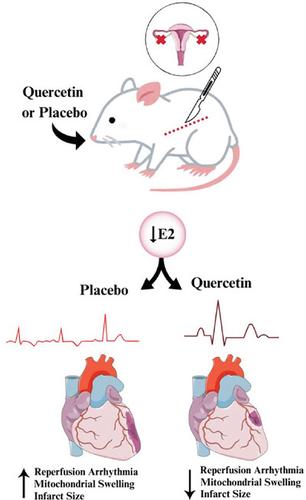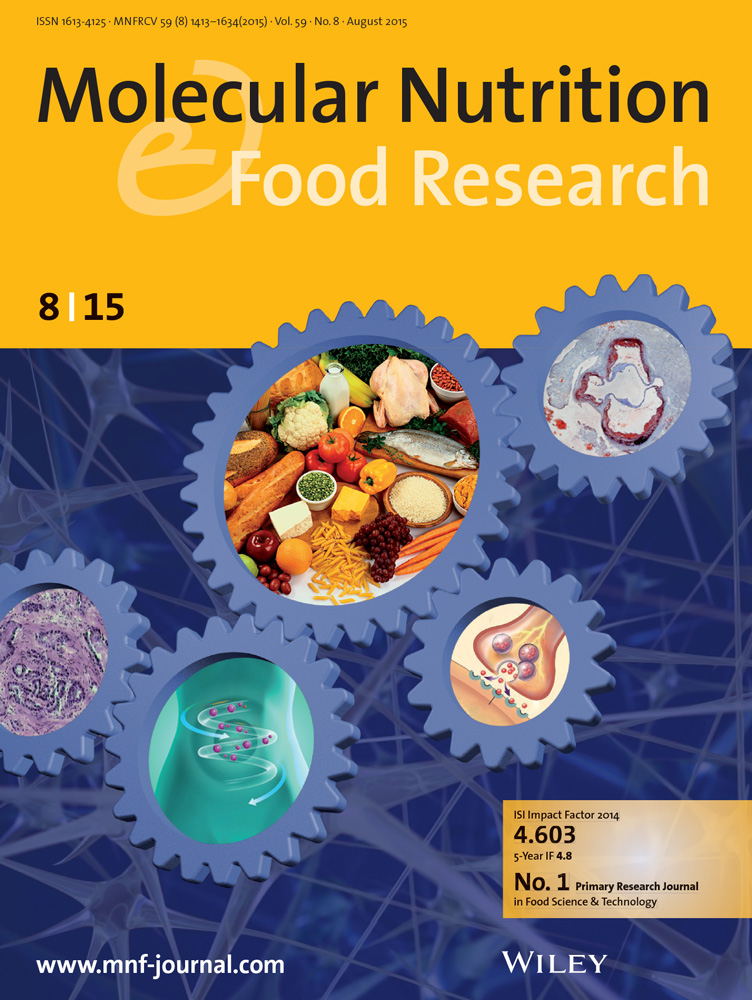Quercetin Reduces the Susceptibility to Cardiac Reperfusion Arrhythmias in Ovariectomized Rats
IF 4.5
2区 农林科学
Q1 FOOD SCIENCE & TECHNOLOGY
引用次数: 0
Abstract
Cardiovascular diseases (CVDs) are the leading cause of death globally. Decrease in female sex hormones during menopause increases the risk of cardiovascular disease, mainly ischemic heart disease (IHD). Quercetin, a flavonoid, has beneficial properties in CVDs due to its antioxidant, anti-inflammatory, and anti-apoptotic effects. The aim of this study was to investigate the effects of quercetin on susceptibility to cardiac reperfusion arrhythmias and mitochondrial function in ovariectomized rats (OVX). Three-month-old Wistar female rats were randomly assigned to the following experimental groups: SHAM-operated, vehicle-treated (DMSO 10% + PBS, 1 mL kg−1); OVX (vehicle-treated); and OVX+Q (25 mg·kg−1). The three experimental groups were carried out for 4 weeks (five times a week) by oral gavage. Quercetin treatment effectively decreased myocardial infarct size and susceptibility to reperfusion arrhythmias. Quercetin treatment was also effective in preventing mitochondrial swelling, while increased ATP production compared to the OVX group. In conclusion, our results indicate that quercetin could have a therapeutic effect in preventing some of the pathophysiological changes caused by low estrogen levels in the cardiovascular system.

求助全文
约1分钟内获得全文
求助全文
来源期刊

Molecular Nutrition & Food Research
工程技术-食品科技
CiteScore
8.70
自引率
1.90%
发文量
250
审稿时长
1.7 months
期刊介绍:
Molecular Nutrition & Food Research is a primary research journal devoted to health, safety and all aspects of molecular nutrition such as nutritional biochemistry, nutrigenomics and metabolomics aiming to link the information arising from related disciplines:
Bioactivity: Nutritional and medical effects of food constituents including bioavailability and kinetics.
Immunology: Understanding the interactions of food and the immune system.
Microbiology: Food spoilage, food pathogens, chemical and physical approaches of fermented foods and novel microbial processes.
Chemistry: Isolation and analysis of bioactive food ingredients while considering environmental aspects.
 求助内容:
求助内容: 应助结果提醒方式:
应助结果提醒方式:


